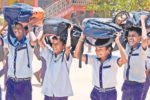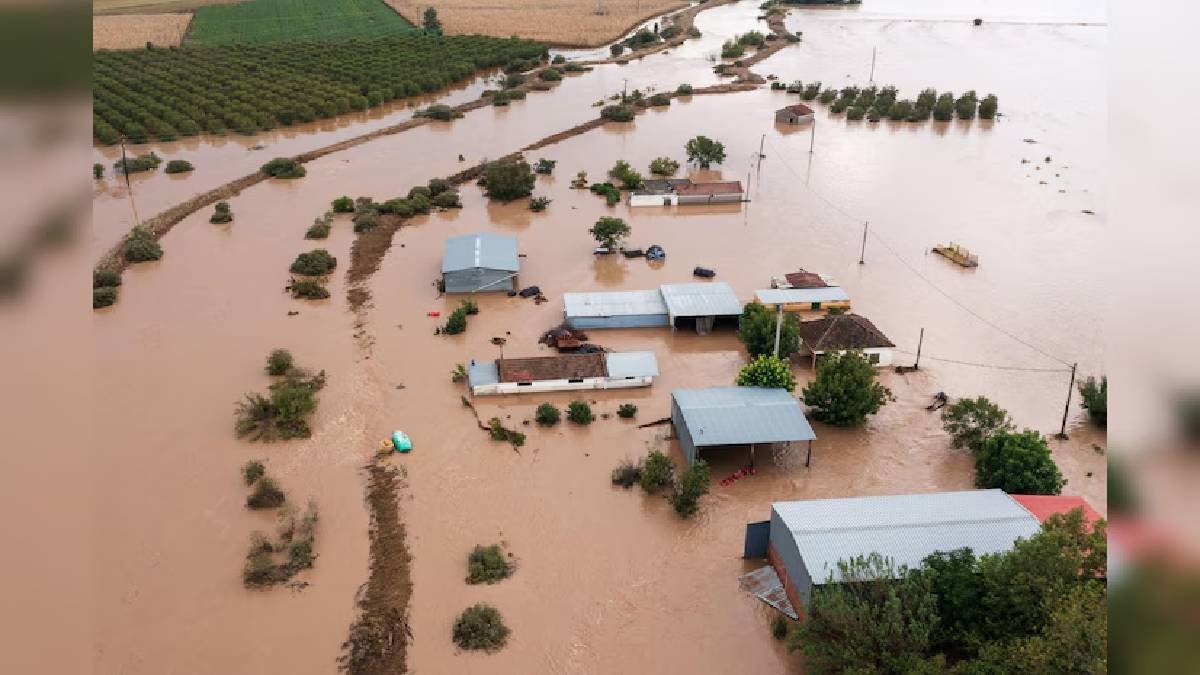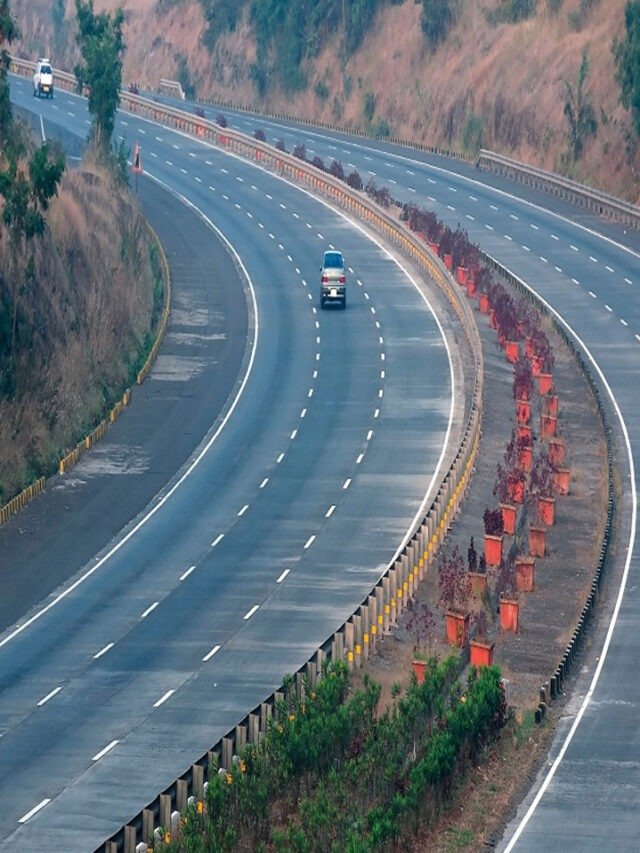NEW DELHI, July 14: Climate related stressors like heat, wildfires, floods, droughts, diseases and rising sea levels affect education outcomes and threaten to undo educational gains of recent decade, according to the Global Education Monitoring Report (GEM).
The global report compiled by UNESCO, Monitoring and Evaluating Climate Communication and Education (MECCE) project and University of Saskatchewan in Canada has pointed out that most low and middle-income countries are experiencing climate-related school closures every year, increasing chances of learning loss and dropout.
“Climate change related impacts are already disrupting education systems and outcomes. Direct effects include the destruction of education infrastructure as well as injuries and loss of life among students, parents and school staff. Climate change has a negative impact on education indirectly through its displacement of people and the effects on people’s livelihoods and health,” the report said.
“Over the past 20 years, schools were closed in at least 75 per cent of the extreme weather events, impacting five million people or more. Increasingly frequent natural disasters, including floods and cyclones, have led to the deaths of students and teachers and have damaged and destroyed schools.
“Exposure to heat has significant detrimental effects on children’s educational outcomes. An analysis linking census and climate data in 29 countries between 1969 and 2012 showed that exposure to higher than average temperatures during the prenatal and early life period is associated with fewer years of schooling, especially in Southeast Asia,” it added.
The GEM report noted that a child experiencing temperatures that are two standard deviations above average is predicted to attain 1.5 fewer years of schooling than children experiencing average temperatures.
“High temperatures reduced high-stakes test performance in China and led to reductions in both high school graduation and college entrance rates. In the United States, without air conditioning, a school year hotter by 1 degree Celsius, reduced test scores by 1 per cent.
“Very hot school days disproportionately impacted African American and Hispanic students, due to poor infrastructure conditions, accounting for roughly five per cent of the racial achievement gap. In the most disadvantaged municipalities in Brazil, which were also amongst those most exposed to heat risk, students lost about one per cent of learning per year due to rising temperatures,” it said.
Elaborating about impact of climate change on education in India, the crucial report pointed out that a study of rainfall shocks over the first 15 years of life in India found that they negatively affected vocabulary at age five and mathematics and non-cognitive skills at age 15.
“The effects were more severe for boys and children of parents with a lower educational attainment. An analysis of disasters experienced early in life by over 140,000 children in seven Asian countries found a negative association with school enrolment, especially for boys, and with mathematics performance, especially for girls, by the time they reach 13 to 14 years,” it said.
Climate-induced education vulnerability is found to be worse for marginalized populations. Of the 10 countries most affected by extreme weather events in 2019, eight were low or lower-middle-income countries. Of the 33 countries identified as bearing extremely high climate risks for children, where nearly one billion people live, 29 are also considered to be fragile states.
“Climate change increases the likelihood of displacement and is one of the reasons why internal displacement has reached the highest levels on record. During 2022, 32.6 million were internally displaced due to disasters. Analysis of five countries – Bangladesh, India, Indonesia, Tuvalu and Vietnam – finds five displacement patterns: temporary displacement, permanent migration to urban settlements, government-planned relocation, cross-border migration and trapped populations.
“These displacement scenarios lead to different barriers to education, related to a lack of financial resources, documentation or residency requirements,” it said.
The report noted that dealing with direct and indirect effects of climate change-induced disruptions requires a comprehensive focus on climate adaptation, including multi-sectoral planning, curriculum reform, teacher training and community awareness and engagement.
Noting that there are increasing calls to improve the ability of school infrastructure to absorb shocks and adapt to stresses and changes brought about by climate change impacts, the crucial report claimed that the efforts remain insufficient.
“Planning and funding for climate impact risks and adaptation remain inadequate Analysis of country submissions for the mid-term review of the Framework for Disaster Risk Reduction found risk levels are rising much faster than the resilience of the education sector in most countries, despite recognition that disaster risk resilience is key for preventing hazards from becoming disasters
“Yet awareness is low. In a recent survey of 94 education policy makers in 28 low- and middle-income countries, only about half believed that hotter temperatures inhibited learning. About 61 per cent viewed climate change among the bottom three out of 10 priorities in education,” it said. (PTI)












